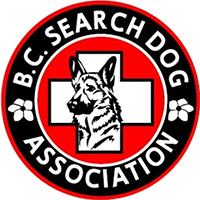Rescue Techniques
For BC Terrain
British Columbia is the most mountainous region of Canada and contains a variety of terrain that presents particular challenges to search and rescue groups.
It is also Canada’s third largest province at 944,735 square kilometres. By comparison, it is larger than every US state except Alaska. In addition to basic search techniques every ground search and rescue (GSAR) volunteer receives during an almost 100 hour ground search and rescue course, GSAR groups have members trained as Team Leaders and Search Management to plan and direct operations. Teams in BC may also train in specific technical rescue techniques appropriate for the areas they cover. The following is a list of rescue techniques used in BC.
SAR Management:
Regardless whether an event is a search or a rescue, there has to be some organization behind it all, and that is the role of the SAR Manager. These individuals are experienced searchers who had risen through the ranks to become trained incident commanders, proficient in understanding maps, search theory, and the tactics and strategies for finding all manner of missing persons.
SAR managers in BC take specialized courses in the Incident Command System (ICS), and working side by side with the RCMP and police, BC Coroners Service, and other emergency responders, are responsible for the safety of their respective search groups.
There are two levels of SAR manager in BC. The first level involves the majority of most searches and rescues in the province, which end in one operational period (12 hours.) However, some searches in BC can last for days and involve thousands of square kilometres of wilderness, hundreds of volunteers from multiple GSAR groups and the public. These searches required highly trained SAR managers, who are considered a level 2 SAR manager.
Types Of Rescue Operations
Rope Rescue
Rope rescue refers to any rescue where a rope is required to safely move the subject, the rescuer, or both. This may be on terrain where the slope is over a certain angle, on vertical terrain, or in areas where a slip or fall will have drastic consequences. Rope rescue courses in BC teach a top-down, dual rope “static” system that is similar to many other regions in the world. Training standards are high, with certifications for team member, team leader and instructor levels.
Swift Water Rescue
Swift water is any moving water that has the possibility of knocking someone off their feet. BC is a province full of rivers and streams and has a significant flooding event every year with ice melt (see the BC River Forecast Centre for more information on this). There is a significant amount of exposure to swift water in the form of fishing, boating, kayaking and white water rafting in BC and there is a need for rescue services both for members of the public and to keep GSAR volunteers safe while searching river banks.
Swift water rescue training is very involved, with some courses lasting several days and covering aspects such as boat operations, shoreline rescue, disentanglement, swimming and “line across” techniques. Certifications from operations to instructor are offered.
Flat Water Rescue
Aside from rivers, BC has a huge number of lakes and reservoirs, Kootenay Lake, Shushwap Lake, Okanagan Lake, Harrison Lake and Pitt Lake are just a few, very large and challenging lakes that are almost the size of inland seas. Because the mandate of ground SAR is to cover land and inland waterways, many GSAR groups adjacent to lakes and rivers develop significant flat water response capabilities.
Specialized equipment for flat water response can range from simple rigid hull inflatable boats and jet skis to full size aluminium rescue boats and hovercraft. Groups that have this capability invest significant time and resources training and responding to flat water rescues.
Flat Ice Rescue
Most of BC goes through a deep freeze every winter, with lakes and rivers freezing solid and various forms of recreating taking place on the frozen surfaces. Ice fishing, skating and snowmobile operations are common. When someone breaks through the ice, in many areas it is GSAR members who respond and this rescue technique is required.
Avalanche Operations
Similar to ice rescue, most of BC has significant snowfall during the winter and any operations with a combination of snow and slopes over a certain angle (steepness), there is the possibility of an avalanche. Training is required in BC for all operations that take place in avalanche terrain because GSAR members have to travel through the avalanche hazard even if they are looking for a lost person.
Basic avalanche rescue training involves terrain analysis, safe travel techniques as well as rescue skills with avalanche transceivers, probes and shovels. Advanced training includes managing teams of people for a rescue and team leadership. Even more advanced training is offered through the Canadian Avalanche Association’s specialized avalanche operations courses.
Tracking

Tracking is a very old and very useful technique for finding a lost person. It can vastly reduce the number of people and the amount of time it takes to find a lost person, but it is a skill that takes training and practise. GSAR tracking certification and training are managed by the BC Tracking Association. Various levels of certification are offered from Track Aware through Advanced Tracker.
SAR Dogs
 Search and rescue dogs are used throughout BC. GSAR dogs have “profiles”, or training certifications, such as air scenting, ground scenting and avalanche rescue.
Search and rescue dogs are used throughout BC. GSAR dogs have “profiles”, or training certifications, such as air scenting, ground scenting and avalanche rescue.
Tracking dog and handler certification and training is coordinated through the BC Search Dog Association (BCSDA), while avalanche rescue dogs and handlers are certified under the Canadian Avalanche Rescue Dog Association (CARDA).
Helicopter Rescue
Many groups also train members in sling loading techniques and advanced patient transport. The use of helicopters in many rescues has resulted in numerous lives saved because of the speed they can bring the patient to medical care.
Helicopter External Cargo (HEC)
Call ‘D’ was pioneered in Canada by parks staff in Banff National Park in the 60s. Originally, the rescuers wore climbing harnesses and were simply attached to the line using regular climbing equipment. Through the work of various BC GSAR teams, notably North Shore Rescue in North Vancouver, this technique evolved into a Transport Canada regulated and certified rescue system used by many teams in BC. With this system the rescuer is outside the helicopter at the end of the rope and is flown to the subject. The subject is then harnessed and attached to the end of the rope and both the rescuer and the subject are flown to a site and lowered to rescuers on the ground.
Winch systems allow for everyone to be transported to the subject inside the helicopter, then, using a winch system, the rescuer is lowered to the subject and the subject is brought back up and into the helicopter and flown to a predetermined site where they can then be transported by ground.
HEC systems allow GSAR field teams and equipment to be moved into normally inaccessible terrain. This technique is used to lower rescuers into areas where tall trees prevent the helicopter from landing or from allowing GSAR members to hover exit. It is also used to rescue people in high, glaciated and mountainous terrain. Because it speeds up access, delivers first aid and transports subjects to medical treatment faster, HEC is responsible for many successful rescues since it’s adoption by Emergency Management BC (EMBC) as a validated rescue technique.
Mountain Rescue
BC is the most mountainous region of Canada. It is cut by mountain ranges, most of them glaciated and covered in snow. People are drawn to BC from all over the world to recreate in these mountains, doing sports such as mountaineering, mountain biking, climbing, backcountry skiing, snowmobiling and heli-skiing. Rescues in the mountains require specialized training that starts with standardizing access techniques. GSAR members are trained in mountain travel techniques such as glacier travel, climbing steep snow and ice, rock climbing in 4th class terrain and above and short rope skills.
Once basic mountain travel skills are learned, self rescue skills are taught; these are techniques used to rescue other team members travelling in the hazardous terrain. Crevasse rescue and companion rope rescue are part of these skills. Finally, organized mountain rescue techniques are taught, as well as advanced medical training in spinal immobilization, oxygen therapy, subject packaging and transport, and the treatment of hypothermia and cold injuries.
BC’s mountain rescue training program was the result of many years of research and development in conjunction with the Association of Canadian Mountain Guides (ACM), the Justice Institute of BC (JIBC) and many subject matter experts in helicopter rescue, wilderness and emergency medicine, and mountain rescue.
Become A Search & Rescue Volunteer
SAR Groups In BC
Incidents Per Year
Volunteers
Contact

P.O. Box 2176
Sidney BC
V8L 3S6
Canada

For Emergencies, Call 911 or
1-800-461-9911 (Toll Free)
250-374-5937 (Cellphone/SAT Phone/Outside BC)
Report Provincial Emergency:
1-800-663-3456





